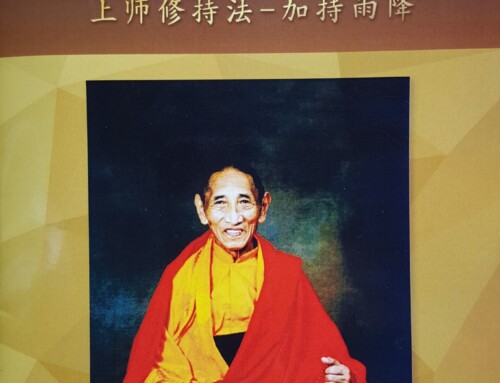- Placing the Mind
- Continual Placement
- Replacement
- Close Placement
- Controlling
- Pacifying
- Fully Pacifying
- Making Single-pointed
- Equal Placement
The First Instruction is ‘placing the mind.’
Here, mind’s single essential nature is considered to perform three functions:
1) When the mind abides directly and peacefully upon its object, this is called ‘stillness.’
2) When the mind in the next moment moves without remaining on its object, this is called ‘movement.’
3) Becoming aware of this movement, by means of mindfulness and alertness, is called ‘awareness.’
When the mind remains focused on its object single pointedly without distraction, whether the object is the form of a deity, a thangka, a flower, etc., this is called ‘placing the mind.’
Second Instruction is ‘continual placement.’
Remaining single pointedly upon the object as in the first instruction, placing the mind. Using mindfulness and alertness to watch out for movement, when the concentration is extended longer without distraction, this is called ‘continual placement.’
Third is ‘replacement.’
If the mind forgets and wanders outwards, mindfulness and alertness immediately recognize it and return the mind to resting upon its object as before. In this way movement is brought right back to stillness. This is called ‘replacement.’
Fourth is ‘close placement.’
When meditating with mindfulness, focused on an object, and subtle underlying movement occurs, you regenerate the power of the previous mindfulness. As your mind remains focused on the object, this is called ‘close placement.’
Fifth is ‘controlling.’
At this point gross conceptions have been somewhat pacified, like a slowly flowing river. When you focus your mind upon the object you feel joy. Because you meditate for longer periods it is called ‘controlling.’
Sixth is ‘pacifying.’
With discursive thought being much reduced, like a slowly flowing river [same metaphor used twice is confusing], your mind can naturally drop [drop?] in to its focal object [?drop into or drop in mental pause to its focal object? — ‘into’ means ‘enter’ while the ‘to’ in ‘in to’ means an action]. Your love of meditation increases tremendously and you experience bliss. The grosser delusions are pacified; hence it is called ‘pacifying.’
Seventh is ‘fully pacifying.’
Here you are freed of even subtle thought, excitement, sinking, and dullness, etc. Mind rests in its focal object like the ocean [?], and the movement of gross and subtle delusion is released as soon as it arises. Your mind has meditative experiences of bliss, clarity, and non-conceptuality one after the other. The space between stillness and movement is joined. Delusions are pacified so it is called ‘fully pacifying.’
Eighth is ‘making single-pointed.’
At this time all movement is perfected within the stillness of pure awareness. Without need for much effort meditation occurs during all activities, and stillness, movement, and awareness are no longer separate. Gross and subtle minds and mental factors cease and the nature of pure awareness is perfected. Undistracted from the brilliance of ‘rigpa,’ pure awareness, this is called ‘making single-pointed.’
Ninth is ‘equal placement.’
Without moving from your previous meditation, like the vast ocean, meditation is perfected in the nature of the clarity and cognition of the present moment of awareness. Meditation and non-meditation, day and night, become undifferentiated. Freed from any sense of stillness being good and movement being bad, you are not distracted from that state and this is called ‘equal placement.’
Colophon:
The young child of pure awareness is raised up by mindfulness and alertness,
By the mother of non-distraction who watches with mindfulness.
To become an accomplished one of perfect realization:
May beings be transformed before much time has passed!
Khenpo Karten wrote this presentation of the nine instructions for concentration meditation for the sake of some new students on September 12, 2016.





